The Aleutian Islands are a chain which extend into the Pacific Ocean from the tip of the Alaska Peninsula. This is an area which is cold and damp, with few trees. In spite of this seemingly inhospitable environment, people have been living on the islands for at least 9,000 years.
The Native people who inhabit the Aleutian Islands are known as Aleuts, which may come from a Native word meaning “island” or from a Russian word meaning “bald rock.” They call themselves Unangan which means “Original People.” In his book The Native People of Alaska, Steve Langdon writes:
“The Aleut are distinctive among the world’s people for their remarkable successful maritime adaptation to this cold archipelago.”
The ancestors of the Aleut may have settled on Anagula Island nearly 9,000 years ago. Archaeological data from Anagula is dated to 6750 BCE when about 75 people were living in a permanent village on the island. In his book The Smithsonian Book of North American Indians: Before the Coming of the Europeans, Philip Kopper reports:
“The place was virtually barren of vegetation—no trees and only a few berries and greens in summer, together with indigestible grasses. Fish, shellfish, birds, and sea mammals sustained the people.”
At the time of first occupation, Anangula appears to have been an island, which means that the first inhabitants would have had to have boats. In his chapter on the prehistory of the Aleutians in the Handbook of North American Indians, Allen McCartney writes:
“The location on the Bering Sea coast, of course, suggests that Anangula people were marine-oriented, but there is no direct evidence that they possessed boats or the degree of maritime expertise expressed by later Aleuts.”
The Aleuts had a maritime economy which included hunting sea mammals (sea otters, seals, sea lions, walruses, and whales) and fishing. Of the sea mammals, the Stellar sea lion was most important. Steve Langdon reports:
“This animal provided not only food but also a vast variety of other products, including boat covers (hide), line and cord (sinew), oil (blubber), tools (bones), fishhooks (teeth), boot soles (flippers), containers (stomach) and materials for garments (esophagus and intestines).”
The Aleuts are also known for making elegant baskets. In making baskets, the weavers used rye grass growing on the beaches. In his Encyclopedia of Native American Tribes, Carl Waldman writes:
“The stems of the grass were split with the fingernails to make threads, and some of the threads were dyed in order to make baskets with intricate woven designs.”
Today, Aleut baskets are considered to be among the finest in the world and are sought by both collectors and museums. The Portland Art Museum has a small display of Aleut basketry. According to the display:
“The Aleut people of Southwest Alaska and the Aleutian Islands also live in a harsh climate characterized by a scarcity of raw materials with which to create art. The many islands, however, are abundant with grass that Aleut weavers use to create flexible baskets made from grass and decorated with wool yarn embroidery or sometimes delicately adorned with downy white feathers from the numerous nesting birds.”
Shown below are some of the baskets which are on display.
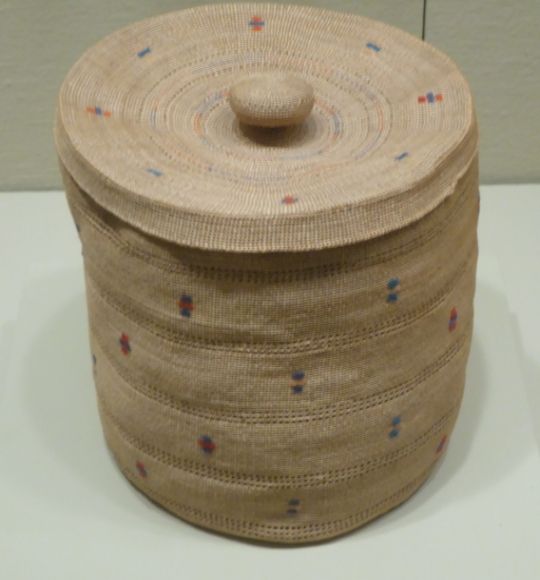 Shown above: Aleut basket made about 1940 from seagrass and wool thread.
Shown above: Aleut basket made about 1940 from seagrass and wool thread.
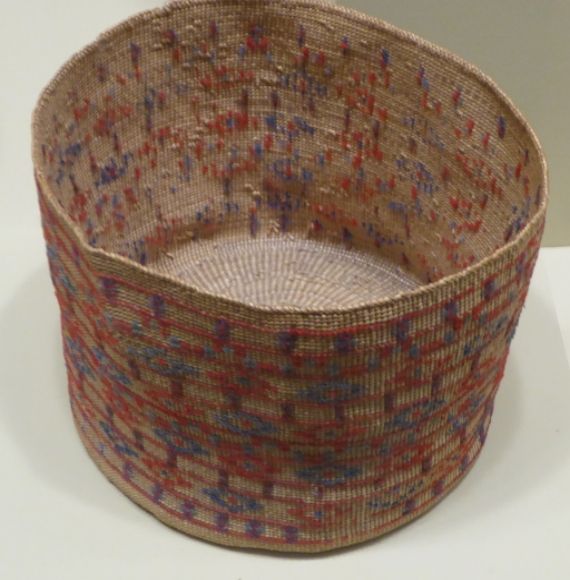 Shown above: Aleut basket made about 1940 from seagrass and wool thread.
Shown above: Aleut basket made about 1940 from seagrass and wool thread.
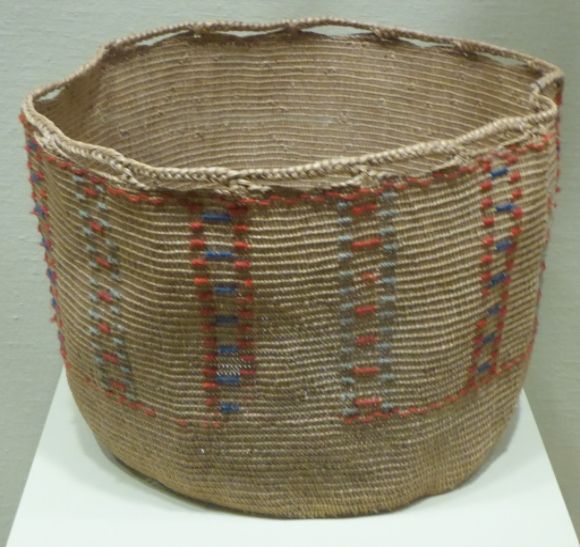 Shown above: Aleut basket made about 1900 from seagrass and wool thread.
Shown above: Aleut basket made about 1900 from seagrass and wool thread.
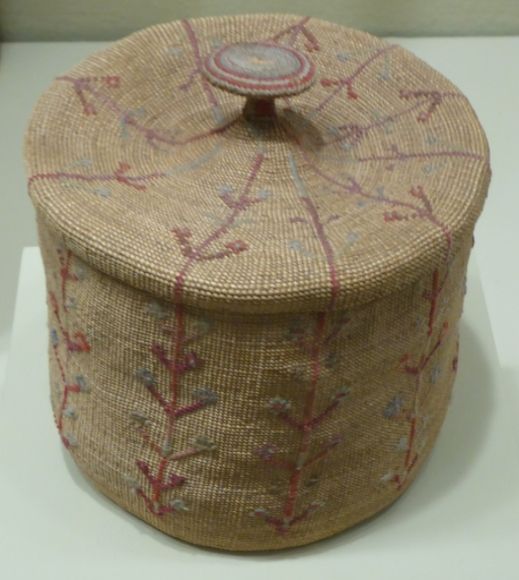 Shown above: Aleut basket made about 1900 from seagrass, wool thread, and cotton thread.
Shown above: Aleut basket made about 1900 from seagrass, wool thread, and cotton thread.
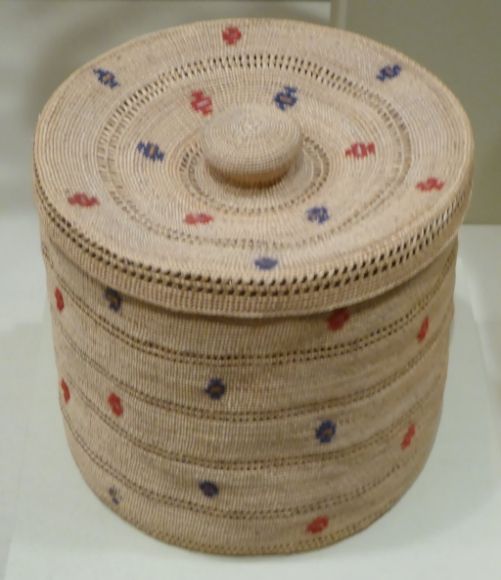 Shown above: Aleut basket made about 1940 from seagrass and thread.
Shown above: Aleut basket made about 1940 from seagrass and thread.
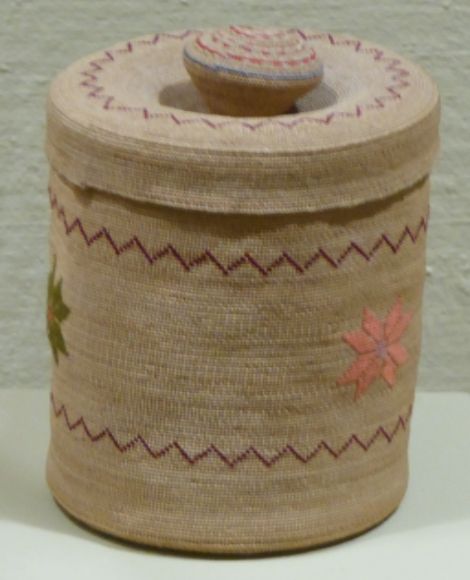 Shown above: Aleut basket made about 1900 from seagrass and silk thread.
Shown above: Aleut basket made about 1900 from seagrass and silk thread.
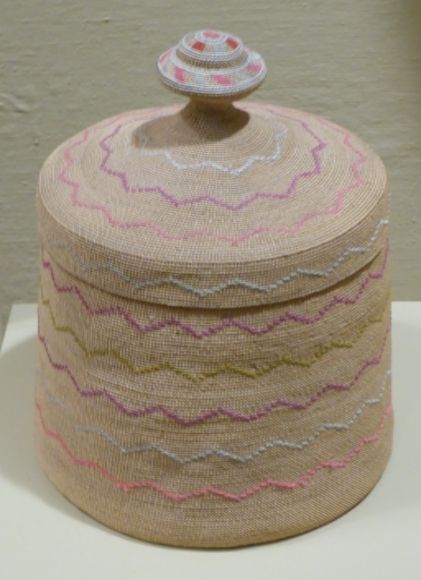 Shown above: Aleut basket made about 1900 from seagrass and silk thread.
Shown above: Aleut basket made about 1900 from seagrass and silk thread.
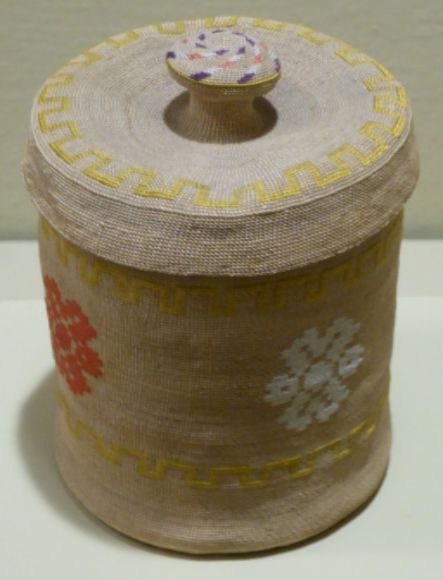 Shown above: Aleut basket made about 1900 from seagrass and silk thread.
Shown above: Aleut basket made about 1900 from seagrass and silk thread.
Indians 101
More about Native American baskets from this series:
Indians 101: California Indian Baskets in the Maryhill Museum (Photo Diary)
Indians 101: Arctic Baskets (Photo Diary)
Indians 101: Klikitat Baskets (Photo Diary)
Indians 101: Pomo Indian Baskets (Photo Diary)
Indians 101: Southwestern Baskets in the Maryhill Museum (Photo Diary)
Indians 101: Mission Indian Baskets in the Maryhill Museum (Photo Diary)
Indians 101: Plateau Indian Baskets (Photo Diary)
Indians 101: Mission Indian Baskets (Photo Diary)
Indians 101: Southeastern Indian Baskets (Photo Diary)
Indians 101: Timbisha Shoshone Baskets (Photo Diary)


